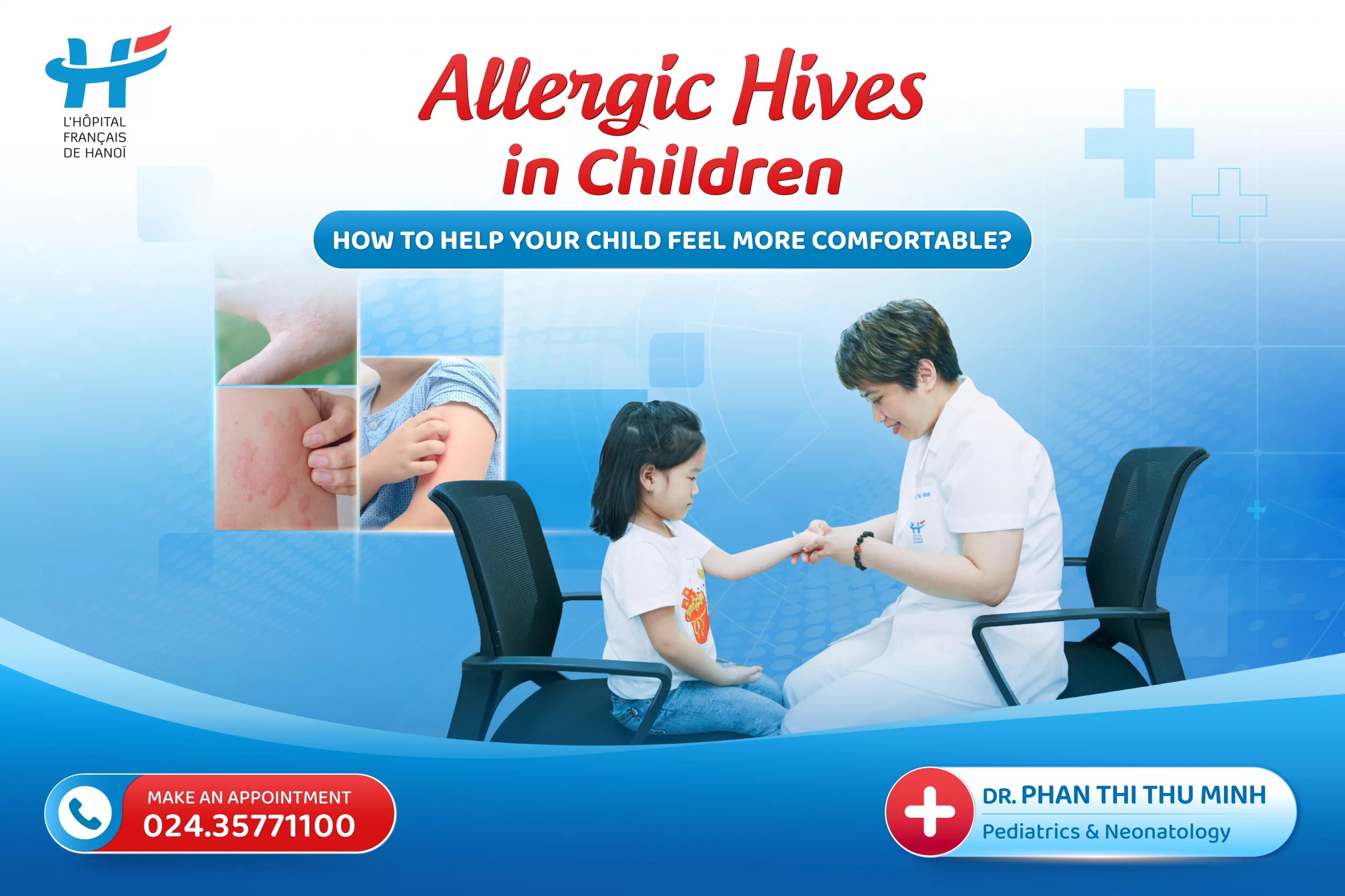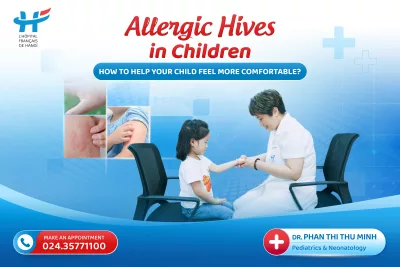According to Dr. Phan Thi Thu Minh, Pediatric and Neonatology, Hanoi French Hospital (HFH), hives in children often appear suddenly. Each lesion typically resolves within a few hours (<24h), while an outbreak may last for several days or longer. Although most cases are not dangerous, hives can cause significant discomfort, sleep disturbances, and irritability in children. Parents may notice:
- Raised, itchy welts on the skin
- Lesions that change shape, size, and location within hours
- Possible swelling of eyelids, lips, hands, feet, or genital area (angioedema)
Parents should seek medical attention immediately if hives are accompanied by breathing difficulty, wheezing, vomiting, severe abdominal pain, fainting – these could be signs of anaphylaxis requiring emergency care – or if the child has a fever.
Common Causes
Hives occur when the immune system reacts excessively and releases histamine, causing redness, swelling, and itching. Common triggers include:
- Viral infections: Responsible for more than 80% of acute urticaria cases in children
- Foods: Often within 30 minutes of eating (milk, eggs, peanuts, seafood, soy, wheat, etc.)
- Medications: Especially antibiotics and anti-inflammatory drugs (ibuprofen, aspirin)
- Insect stings: Bees, fire ants, wasps, etc.
- Environmental allergens: Pet dander, pollen, latex, raw vegetables or fruits
Changes in temperature, sweating, or emotional stress may also exacerbate the condition.
In most cases, diagnosis is based on clinical examination. Additional tests may be required if needed:
- Allergy testing (skin or blood tests): When food or drug allergy is suspected
- Skin biopsy: In rare or prolonged cases, especially with fever or bruising
- Blood tests: If the child has a fever to check for infection
At Hanoi French Hospital, children showing signs of allergic hives are provided with a comprehensive and personalized care plan:
- Avoid triggers: Eliminate suspected foods or environmental factors.
- Antihistamines: The main treatment to reduce itching and rash. New-generation antihistamines (loratadine, cetirizine, fexofenadine) cause less drowsiness and are safe for long-term use under medical supervision.
- Other medications: Short-term use may be indicated in severe or resistant cases, as prescribed by a specialist.
- Multidisciplinary management: For chronic or recurrent hives, or when autoimmune disease is suspected, consultation with allergy or dermatology specialists may be required.
What Parents Should Keep in Mind
- Stay calm and monitor your child’s symptoms carefully.
- Follow the doctor’s instructions when giving medications.
- Prevent scratching to avoid skin damage and infection.
- Keep a diary of your child’s diet and exposure to identify triggers.
- Seek immediate medical help if signs of anaphylaxis or fever occur.
Pediatric & Neonatology, Hanoi French Hospital (HFH) provides comprehensive pediatric care – from general health check-ups, vaccination, and growth monitoring to nutrition counseling, disease diagnosis, and treatment.
For more information or to book an appointment with our pediatricians, please contact our HOTLINE: 024.35771100, message our Facebook Fanpage “Hanoi French Hospital”, or via Zalo OA: zalo.me/2008009049335817955.


